
Business reputation is something that can often be overlooked when developing online marketing strategies. With so much focus on driving traffic to your own website, it’s easy to overlook anything that isn’t right there where you can quickly edit and publish.
But think about what happens when someone has a bad experience at your business in the real world; they’ll usually leave your place of business and start venting their poor experiences to friends, family, and whoever will listen.
And those innocently listening ears consume this information and take it into account the next time they are selecting a business like yours. Likewise, if that customer has a good experience, they’ll do the same, which often results in strong word-of-mouth leads who become repeat customers.
Now, think about the same thing in an online world. We know people are less inhibited when expressing their feelings online. We also know that negative rants can become viral and make or break a business depending on how the company reacts — if they even react!
While we can’t influence the reactions of our customers once they step outside of our doors, we can ourselves react in a way that reflects the best characteristics of our business and shows potential customers what they can expect from us in the future.
In this multipart series, I’ll highlight some basic online reputation management strategies you can use to increase the chance of attracting new customers while keeping the critics at bay.
Part 1: Winning Review Responses on Google Business Profile, Bing Places, Yelp, and Other Local Search Listings
Arguably the most significant factor for potential customers in their research stage, online reviews can make or break your business, especially if your business is brand new. Responding to online feedback is just as critical, if not more so, than responding to feedback in person.
Responding to Positive Reviews
If someone was standing in your business in front of a huge group of people and said, “Wow! This is the best experience I’ve ever had!” that would have quite a bit of pull, no?
So I’m guessing if that happened, you wouldn’t say anything, right?
WRONG!
You would say, “Wow, thanks! I’m so glad you had a great experience” and maybe go on to ask more questions, encourage them to come back, etc. So why not take the time to do that for online reviews, where they spent even more time to type that feedback out?
There are good and bad ways to do this. Can you see the difference in these examples?

Above are examples of bad responses to positive reviews. Why are they bad? Because there is zero customization — the answers might as well be from robots!
The business owner just copied and pasted the same response to every reviewer, regardless of what they said. Look at the incredible feedback given here from customers. The opportunity was there to wish a guest a happy birthday, and show gratitude to someone who brought a group of 20 with them — talk about a missed opportunity!
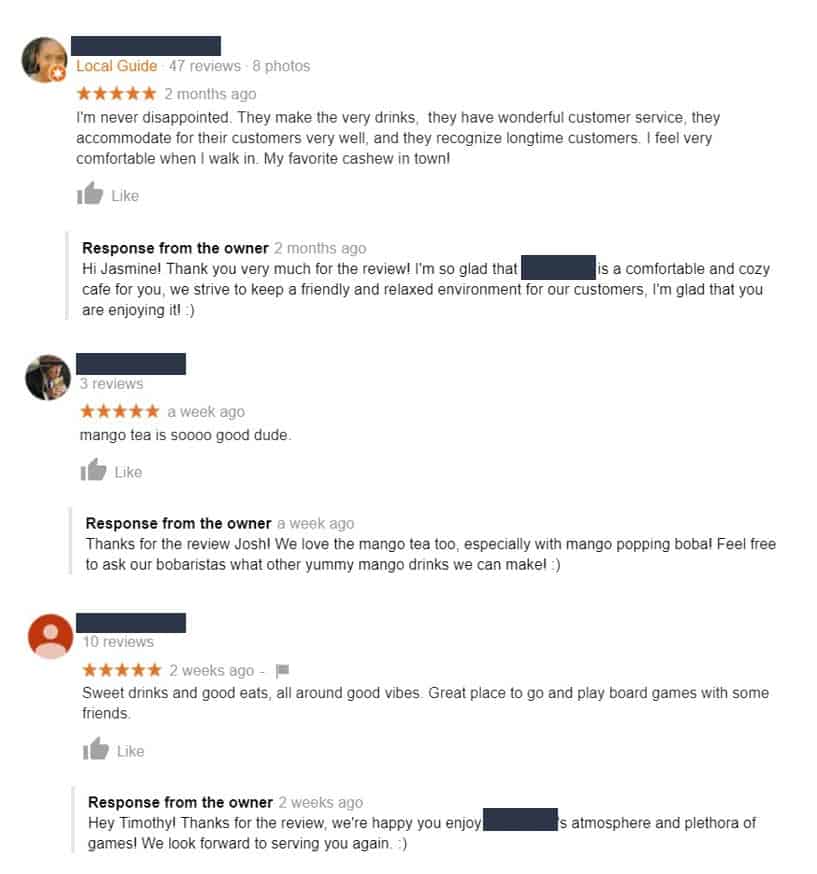
Responding to Negative Reviews
Just as with a good review, a bad review in front of a huge group of people can also have a lot of pull… but not the kind we want!
Your response can either have a positive impression on your potential customers, or leave a bad taste in their mouth that they don’t want anything to do with. Consider the following examples and decide which business you would be most likely to patronize:
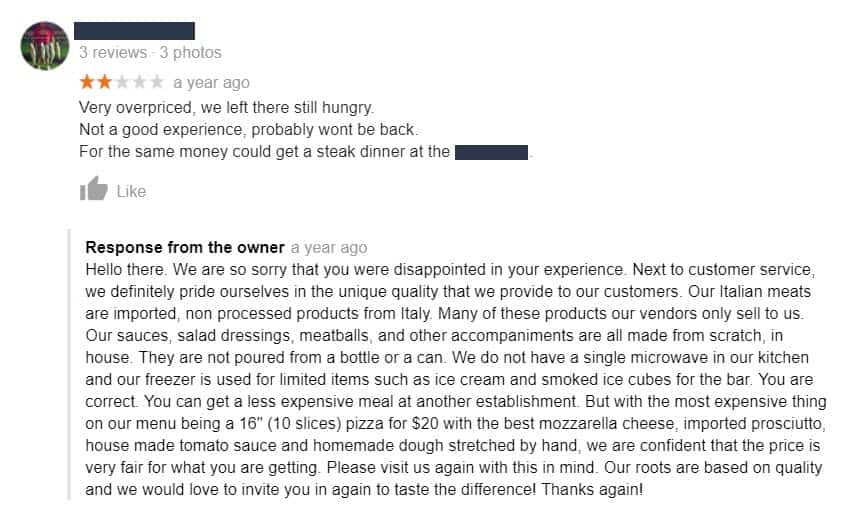
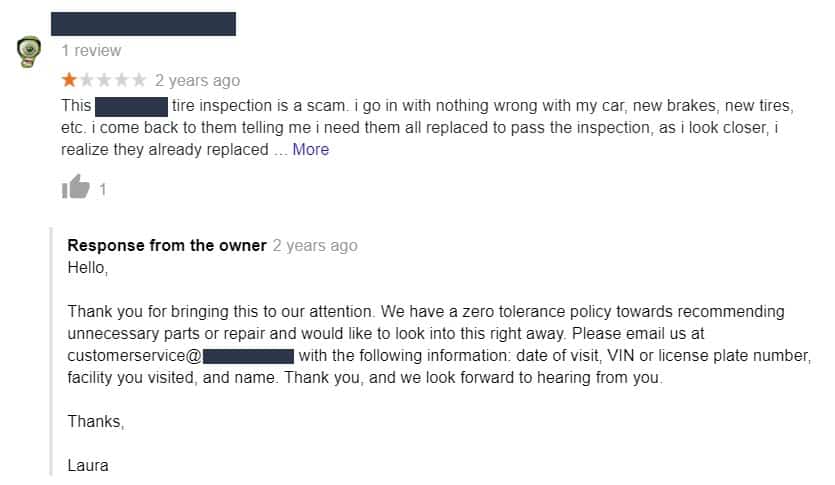
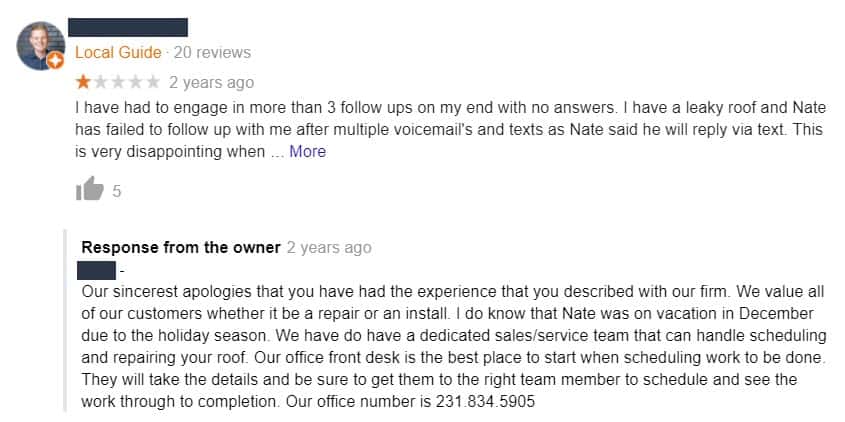
In addition, it provides ways the customer can take action in the future, which puts the customer back in control and gives them a reason to continue to do business with the company.
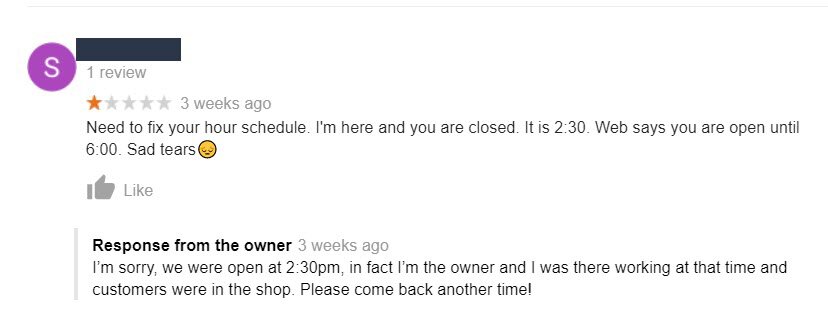
This customer doesn’t seem hostile – just disappointed – which is a red flag that there may in fact be a problem you need to correct.


First, there is really not much sense in responding to a one-star review with no actual review. Second, a Google review is not the time or place to call out someone else’s mental health condition – it’s in poor taste and is simply unnecessary.

This is private drama that should not be aired in an online space, and having a few bad reviews won’t harm you as much as your response to those reviews could.
As you can see, there are quite a few things to take into account when composing a review response; however, with the right mindset and professionalism, using these strategies will help you smooth the edges with existing customers and win the business of new ones.
Stay tuned for part 2 in this series, where I’ll tackle brand reputation challenges in the social media arena, as well as simple processes you can put in place to ensure your brand reputation strategy is both holistic and efficient.
About the Author

Nicole Vesota
Vice President & Project ManagerNicole has been working in online marketing since 2007 when she joined Top Of The List. She loves creative endeavors and spending time with her daughter.




